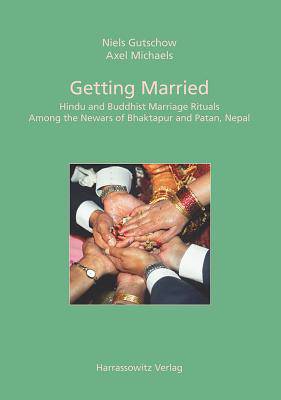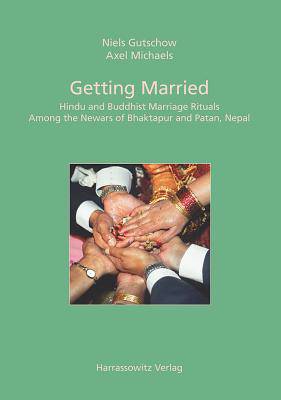
- Afhalen na 1 uur in een winkel met voorraad
- Gratis thuislevering in België vanaf € 30
- Ruim aanbod met 7 miljoen producten
- Afhalen na 1 uur in een winkel met voorraad
- Gratis thuislevering in België vanaf € 30
- Ruim aanbod met 7 miljoen producten
Zoeken
Getting Married
Hindu and Buddhist Marriage Rituals Among the Newars of Bhaktapur and Patan, Nepal
Niels Gutschow, Axel Michaels
Hardcover | Engels
€ 175,95
+ 351 punten
Omschrijving
Getting Married is the third and final volume on Hindu and Buddhist life-cycle rituals among the Newars of the ancient city of Bhaktapur in Nepal. It combines extensive fieldwork and the edition and translation of relevant ritual handbooks. While Handling Death, the first volume, focused on the dynamics of death and ancestor rituals, and Growing Up, the second volume, focused on the rituals of childhood, adolescence and youth (especially the male and female initiation rituals), the present volume deals with a number of rituals related to marriage. After an introductory overview of studies on marriage rituals in Nepal the authors give some basic marriage rules of Hindu and Buddhist Newars, the social topography and hierarchy, the families of the marriage partners as well as the problems of endogamy and exogamy in Bhaktapur. They present a detailed description of Hindu and Buddhist marriage rituals among Newars (which are partly documented on the DVD included in this book) and come to relevant conclusions regarding life-cycle rituals in general and the place marriage rituals occupy in Newar society and Hinduism. Furthermore the texts used by Brahmin and Buddhist priests during these rituals are edited and translated and complemented by comprehensive Appendices including a list of elements of Newar rituals and mantras as well as a mantra and general index to all three volumes. These richly illustrated books have been highly appreciated by the scholarly community as a unique attempt to provide a comprehensive ethno-indological study of all major life-cycle rituals of a certain Hindu and Buddhist community.
Specificaties
Betrokkenen
- Auteur(s):
- Uitgeverij:
Inhoud
- Aantal bladzijden:
- 411
- Taal:
- Engels
Eigenschappen
- Productcode (EAN):
- 9783447066631
- Verschijningsdatum:
- 1/12/2012
- Uitvoering:
- Hardcover
- Formaat:
- Genaaid
- Afmetingen:
- 234 mm x 257 mm
- Gewicht:
- 1338 g

Alleen bij Standaard Boekhandel
+ 351 punten op je klantenkaart van Standaard Boekhandel
Beoordelingen
We publiceren alleen reviews die voldoen aan de voorwaarden voor reviews. Bekijk onze voorwaarden voor reviews.








